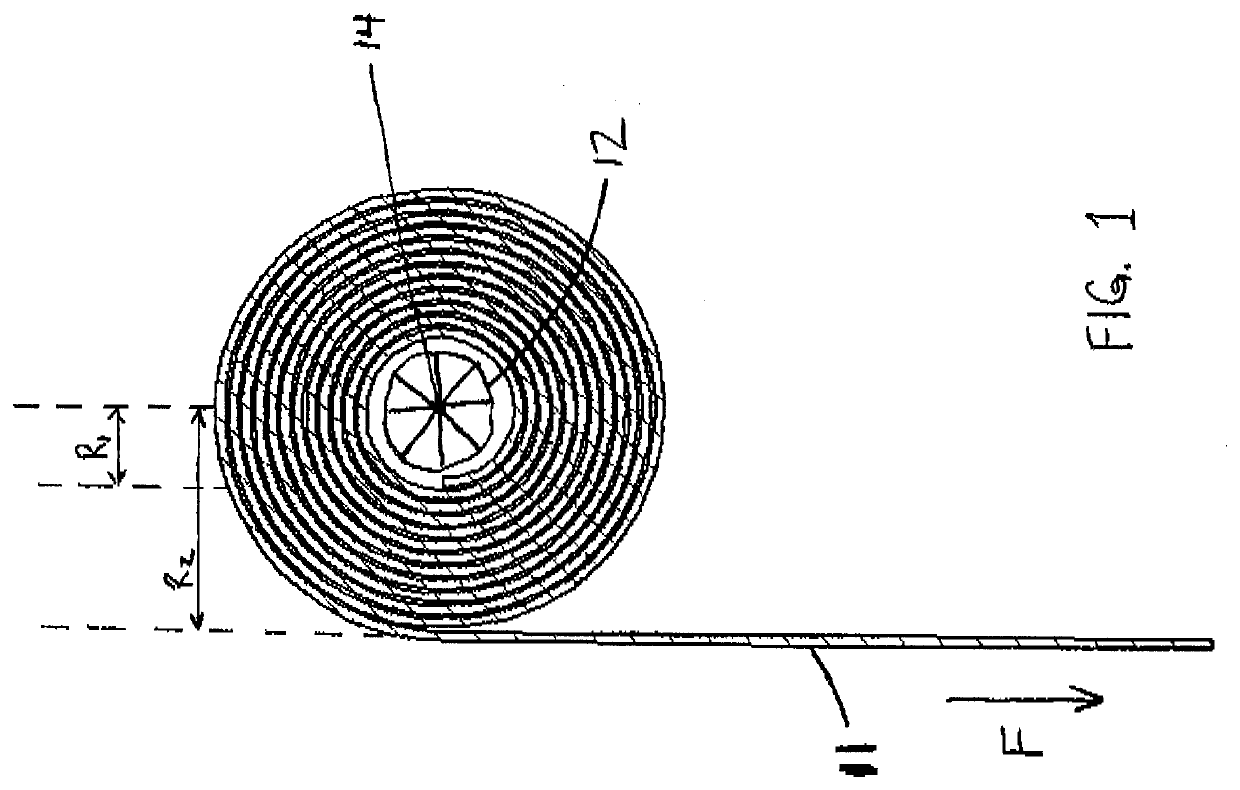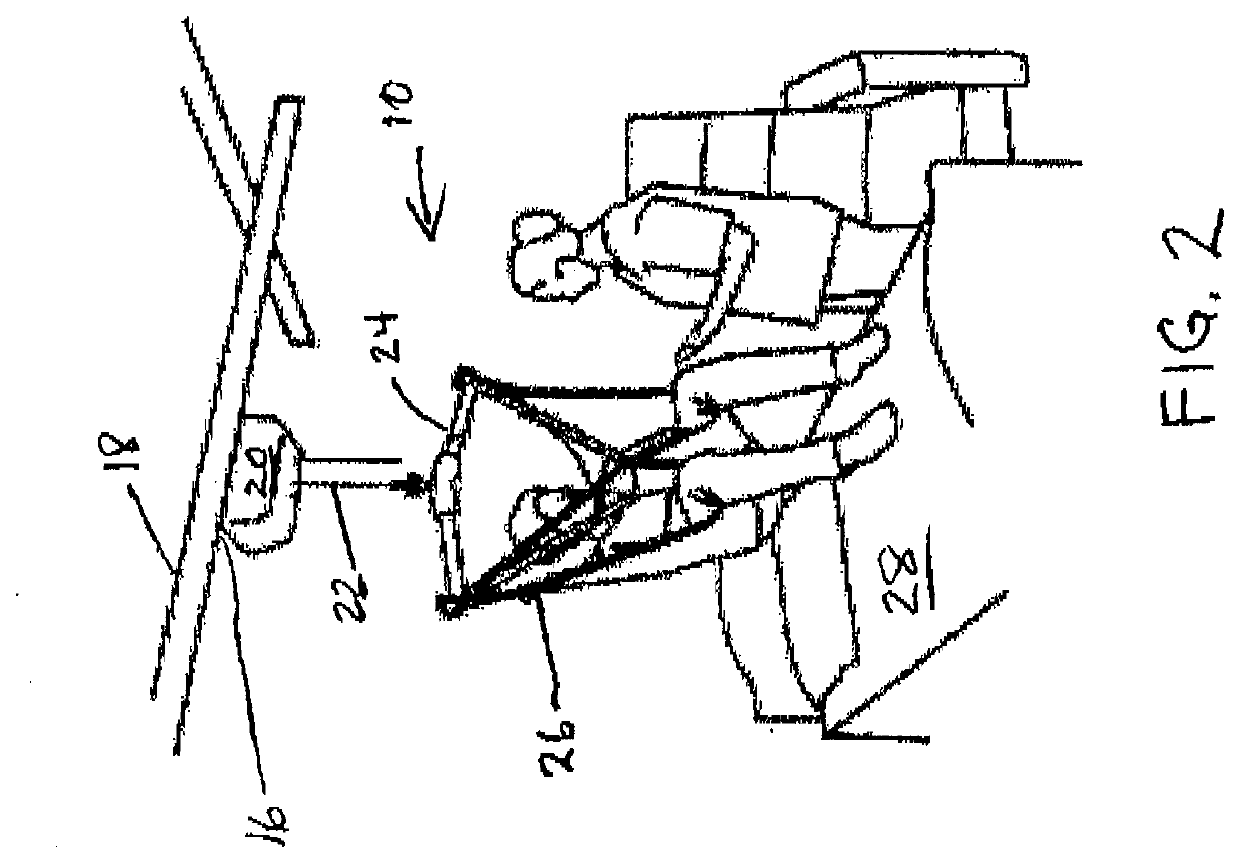Patient lift device and method
a technology for lifting devices and patients, applied in hospital equipment, medical science, nursing beds, etc., can solve problems such as insufficient strength for help, caregiver injuries, and difficulty in adjusting to the new position of patients, and achieve the effect of improving the mobility of patients and reducing the difficulty of adjusting to the new position
- Summary
- Abstract
- Description
- Claims
- Application Information
AI Technical Summary
Benefits of technology
Problems solved by technology
Method used
Image
Examples
Embodiment Construction
[0016]In a typical lift, the spool winds the strap in a spiral configuration. In other words, starting from full extension, as the spool winds the strap to lift the patient, the strap is being wound on top of itself, with the diameter of the wound portion of the strap thus becoming progressively thicker as the patient is lifted further. This configuration is shown in FIG. 1, which is a cross-sectional view of a strap 11 wound on a spool 12 having a cross-sectional centre point 14. R1 and R2 are thicknesses of the spool and wound strap at different points, and are shown as perpendicular to the portion of the strap extending down to the patient.
[0017]The present inventors have noted that this configuration has certain disadvantages. First, the winding of the strap takes up a lot of space. In order for the strap to have adequate strength to lift and lower patients repeatedly, it has to be both wide and thick, and at the same time has to have a minimum strap length to accommodate liftin...
PUM
 Login to view more
Login to view more Abstract
Description
Claims
Application Information
 Login to view more
Login to view more - R&D Engineer
- R&D Manager
- IP Professional
- Industry Leading Data Capabilities
- Powerful AI technology
- Patent DNA Extraction
Browse by: Latest US Patents, China's latest patents, Technical Efficacy Thesaurus, Application Domain, Technology Topic.
© 2024 PatSnap. All rights reserved.Legal|Privacy policy|Modern Slavery Act Transparency Statement|Sitemap



